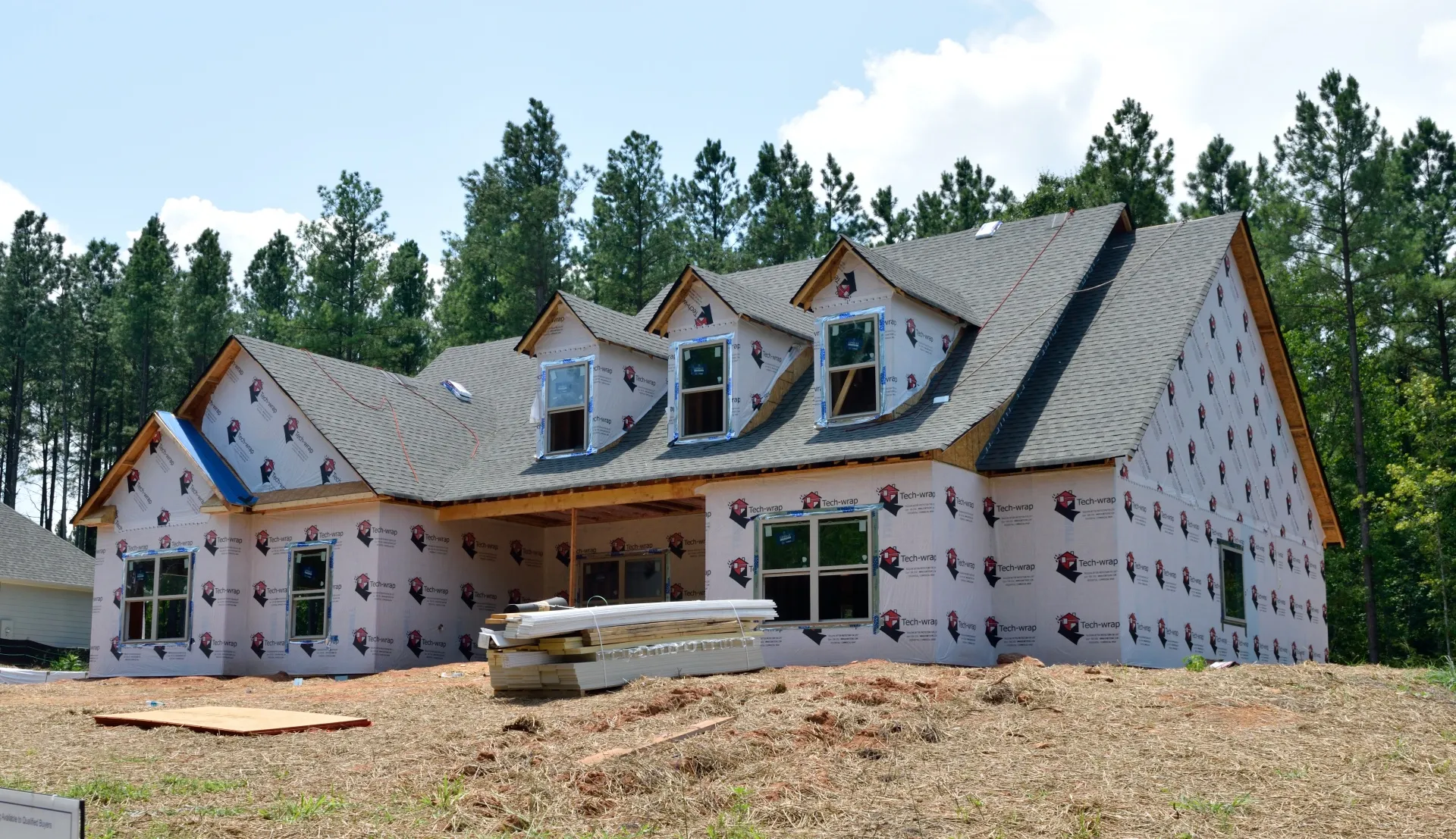Want to build a house with precision? Look no further than this guide to creating a construction profile. It’s like a blueprint for your dream home, helping you avoid costly mistakes and ensuring it’s built just the way you want it. Get ready to unlock the secrets of accurate building and elevate your construction skills to the next level.
Construction Profile for Building Houses
So, you’re planning to build a house! That’s exciting, but before you break ground, you need to create a solid blueprint for your construction crew. This blueprint, known as the construction profile, will ensure your house is structurally sound, meets all the building codes, and ends up exactly where it should be on your property. Think of the construction profile as the foundation of your foundation – it’s all about getting those initial lines and measurements spot-on.
Want to know how to create an impactful construction project profile? Refer to this guide to establish a strong foundation for your plan.
What Exactly Goes into This Profile?
Creating an accurate construction profile involves a few key things:
- Knowing Your Boundaries: First things first, you need to know your property lines like the back of your hand. Check your survey, look for any easements (like shared access paths), and understand how close you can build to the edges of your property.
- Getting to Know Your Soil: Next up, it’s soil investigation time! Different soil types have different strengths and weaknesses. You need to ensure the ground beneath your house can handle the weight. Also, understanding water drainage is crucial to prevent a soggy basement.
- Keeping Your Distance (From the Neighbors): Even if you’re building in the middle of nowhere, there are rules about how close you can build to your neighbors and other structures. These are called setbacks, and they vary depending on your location and the type of building.
Alright, Let’s Build This Profile (Step-by-Step)
Now that you’ve got the basics down, let’s outline the steps to create your construction profile:
- Find Your Corners: Grab your measuring tape and some sturdy stakes. Head out to your building site and mark the four corners of your future house. This takes precision! Make sure your corners form perfect 90-degree angles (use the Pythagorean theorem if you have to!) and that the opposite sides are parallel.
- Set Up Your Guideposts: Next, you’ll build what are called “batter boards.” These are sturdy wooden posts set back from each corner, connected by strong string lines. These lines represent the outline of your foundation walls and need to be laser-level to ensure your house isn’t wonky.
- Double-Check Your Position: With your batter boards in place, take a step back and compare the layout to your site plan. Are you positioned correctly on the lot, considering those setbacks we talked about? Now’s the time to make any adjustments.
- Lock It In: Once you’re happy with the positioning, drive those stakes deep into the ground and secure the string lines. This creates a stable framework for your construction crew to follow.
Why All This Fuss?
You might be thinking, “Is all this setup really necessary?” Trust me, it is! An accurate construction profile is the key to:
- A Strong Foundation: A level, well-positioned foundation is essential for a structurally sound house. It prevents cracks, settling, and other costly headaches down the line.
- Staying Out of Trouble (with the Law): Building codes exist for a reason – safety! Following them ensures your house is safe to live in and meets all the legal requirements.
- Building Smoothly and Efficiently: A clear construction profile makes life easier for everyone involved in the building process, from the excavators to the framers. It keeps things moving along smoothly and helps prevent costly mistakes.
What is the Purpose of a Construction Profile?
Think of a construction profile as the blueprint’s GPS system. It’s not just about what you’re building, but where it sits on your land – and how that placement guarantees a strong, level, and visually appealing structure.
This profile acts as a roadmap for the entire construction crew, ensuring everyone’s on the same page from the first brick laid to the final inspection. Here’s how it works:
- Hitting the Mark with Accuracy: Imagine starting a house only to realize it’s encroaching on your neighbor’s property line! A construction profile eliminates this risk. It defines the exact location of your building on the site, guaranteeing it aligns perfectly with the approved plans and avoids legal headaches down the road.
- Building a Foundation for Success: A crooked house is a recipe for disaster. The profile establishes a level and stable base for your structure, ensuring that walls are plumb, floors are even, and the entire building can withstand the test of time.
- Boosting Curb Appeal: Beyond functionality, a well-defined profile enhances the aesthetics of your project. It dictates the building’s relationship to the surrounding landscape, ensuring proper grading, drainage, and a visually harmonious end result that adds value to your property.
- Checking the Boxes for Safety and Compliance: Building codes exist for a reason – to ensure safety and structural integrity. A construction profile helps you meet these crucial standards. It guides the construction process to comply with regulations, reducing the risk of delays, fines, or even dangerous structural issues.
- Fostering Teamwork and Transparency: Miscommunication on a construction site can lead to costly mistakes. A clear and detailed profile acts as a universal language, providing a shared understanding between architects, engineers, and contractors. This minimizes errors, streamlines the workflow, and keeps the project moving smoothly.
In a Nutshell:
A construction profile is about much more than just marking the spot. It’s the foundation upon which a successful construction project is built – ensuring accuracy, stability, compliance, and even aesthetic appeal.
How Do Construction Profiles Benefit Building Accuracy?
We’ve talked about how important accuracy is in construction, and that’s where construction profiles come in – they’re like blueprints for your foundation and walls, making sure everything ends up exactly where it should be.
Think of it like this: before you even start digging, you use these profiles to mark out the exact shape of your house on the ground. This way, you know exactly where to dig and how deep to go for the foundation. It’s like using a cookie-cutter, but for your house! Getting this part right is super important because any mistakes in the foundation can cause big problems later on.
Once the hole is dug, the profiles come in handy again. They act as guides for placing the foundation walls, guaranteeing they’re straight, level, and in the right spot. Imagine trying to build a tower of blocks on a wobbly table – it wouldn’t end well, would it? That’s why a level foundation is so crucial, and construction profiles help achieve just that.
But wait, there’s more! These profiles aren’t just for foundations – they’re used throughout the building process. Need to make sure the walls are perfectly straight and level? Use a profile! Want to get those windows and doors installed without any wonky gaps? Profiles to the rescue! They’re like the unsung heroes of construction, ensuring everything lines up beautifully.
Here’s a simple breakdown of how construction profiles help ensure accuracy:
| Benefit | Explanation |
|---|---|
| Accurate Excavation | Defining the building’s perimeter helps guide digging for the foundation, ensuring it’s the right size and depth. |
| Precise Foundation Placement | Profiles act as reference points for positioning the foundation, ensuring it’s level and square. |
| Straight Walls and Aligned Components | They guide the framing of walls, installation of windows and doors, and more, keeping everything straight and aligned. |
| Determining Elevation Levels | Profile boards help establish the height of the foundation and walls, ensuring the building meets the desired specifications. |
| Support for String Lines | Profiles can support string lines, which are used to align components throughout the construction process, further ensuring accuracy. |
Construction profiles are essential for getting the building blocks right from the very beginning. They save time, prevent costly mistakes, and ultimately contribute to a safe and well-built structure.
Step-by-Step Guide: Setting Out a Construction Profile for Your House
Alright, so you’re ready to start laying the groundwork for your dream home! Before the first brick is laid or a wall is framed, you need to make sure everything is exactly where it needs to be. This is where setting out a construction profile comes in – it’s like drawing a blueprint directly on your land. Don’t worry, it’s not as complicated as it sounds. Let’s break it down:
1. Mapping Out Your Territory: Defining the Perimeter
Think of this as drawing the outline of your house on the ground. Grab some stakes and string, and head out to your building site. You’ll want to mark the four corners of your future house. Now, here’s the key: those corners need to be perfect right angles (90 degrees). You can use a measuring tape to make sure the opposite sides are equal and that the diagonals across the rectangle you’re making are also the same length. This ensures a solid, square foundation for your house.
2. Finding Your Place: Positioning the House
You wouldn’t want your house in the wrong spot, would you? This step is all about using your site plans and any boundary markers to figure out exactly where your house will sit within your property lines. Once you’ve pinpointed the perfect location, it’s time to set up batter boards. These handy guys are like height markers; they’ll help you make sure your foundation is at the right level. Remember to check your local building codes to make sure everything is up to snuff.
3. Setting the Stage: Securing Those Batter Boards
Batter boards are your best friends during construction. Drive stakes firmly into the ground outside the corners of your house outline, then attach the batter boards to these stakes. Now, grab your trusty level and make sure the batter boards are all at the same height. Once that’s sorted, string lines are stretched tautly between the batter boards, creating a clear outline of your foundation and walls.
4. Staying on Track: Using Your Guidelines
With your perimeter, position, and batter boards set, you’ve got the ultimate guide for your building project! These string lines will act as a reference point for everything from pouring the foundation to framing the walls. As construction progresses, regularly check your original plans against the work being done and make any tiny adjustments to the string lines, if needed. This might seem like a small detail, but trust me, it will save you potential headaches (and costly fixes!) down the line.
Key Takeaways (The Short & Sweet Version):
- Precision is Key: Accurate measurements, especially those right angles, are crucial for making sure your house is structurally sound.
- Location, Location, Location: Double-check that your house is positioned correctly on your property to avoid any legal issues later on.
- String Lines are your Friend: They might seem simple, but they are essential for keeping your entire construction project aligned and on track.
- Stay Vigilant: Regularly review your plans and make sure the construction matches what you have on paper.
Want to Learn More?
For a more detailed guide, check out this helpful resource: Setting Out a Building: A Step-by-Step Guide
- Marble Countertops Cost: What Factors Impact the Total Price? - January 2, 2026
- Small Corner Kitchen Ideas: Maximize Style In Tight Spaces - January 1, 2026
- Kitchen Counter Corner Ideas: Style Your Awkward Angles Now - December 31, 2025










